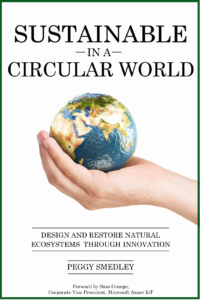Natural disasters such as wildfires continue to damage property, requiring restoration and rebuilding of towns around the world. Candidly most of us can’t truly imagine the devastation of a natural disaster, let alone any type of devastation from a disaster, unless we are faced with it. So, for today’s discussion, let’s consider how technology might help in times of need following the emergency crises and response of a disaster.
Consider the Palisades Fire, which began January 7, 2025, and burned most of the month. While field damage inspection is still ongoing and subject to change as of this writing, we know the widespread destruction so far has been reported at 6,831 structures destroyed and 973 structures damaged and still counting. We see 12 confirmed civilian fatalities, three confirmed civilian injuries, and one confirmed firefighter injury.
The question then has to become: What can be done to restore cities following natural disasters? Certainly, the answer is myriad, but let’s consider some ways technology can help.
All about Agriculture
Journey back with me for a moment to March 2023 and consider the farmers in California before the fires raged in Los Angeles. GrubMarket saw a need to empower farmers and improve the ag ecosystem and thus launched Sustainable California in March 2023. The organization has promoted organic farming practices, supported reforestation, and developed innovative technologies for a more resilient and sustainable food system. Since that time, the organization has planted more than 100,000 trees throughout the state of California.
Flash forward to January 2025. The Palisades Fire burned more than 40,000 acres and countless trees. Sustainable California’s 2025 initiative aims to support the Los Angeles area with environmental restoration following the recent wildfires. Sustainable California is partnering with nonprofit reforestation organizations to help restore natural habitats and improve soil health and water retention.
Another objective here is to help California farmers participate in the benefits of digital transformation of the food supply chain. We know technology can help improve both efficiency and sustainability in farming practices.
To enable this, GrubMarket will provide free software subscriptions to all farmers based in California for the entire year of 2025. GrubMarket will offer its suite of AI-powered SaaS (software-as-a-service) products, including WholesaleWare ERP, Orders IO, and GrubAssist AI.
While this is simply one example, we know technology such as AI (artificial intelligence) can help farmers improve efficiency and improve overall operations.
All about Landscape Management
Let’s consider another example for a minute of how the right tools and technology can help with landscape management. As we have already seen with ag, we know sustainability and eco-friendly practices are becoming a greater priority, especially in light of climate concerns with events such as the Palisades Fires.
To turn to greater sustainability, as another example, in 2024, Enhanced Landscape Management transitioned 50% of its crews to Greenworks electric power tools. By adopting electric tools, crews enjoy quieter days, eliminate dangerous fumes, and skip time-consuming maintenance—all while getting back personal time once lost to refueling and repairs.
Here at Connected World and Constructech, we have written about all the ways gen AI can also help rebuild transportation, infrastructure, and cities faster. We must continue to turn to new tools and technologies to rebuild all while thinking of future generations. Perhaps the bigger challenge now is that we just can’t seem to rebuild fast enough. That in and of itself creates an entirely new set of challenges.
Want to tweet about this article? Use hashtags #IoT #sustainability #AI #5G #cloud #edge #futureofwork #digitaltransformation #green #ecosystem #environmental #circularworld


